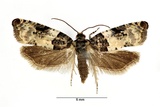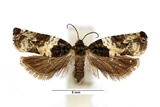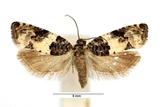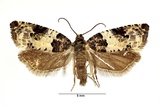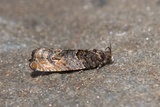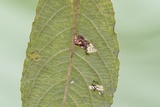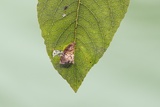Gypsonoma dealbana (Frölich, 1828) Species
Last modified: Nov. 24, 2025, 5:25 p.m.
A common species throughout Belgium.
Details
- Classification
- Family: Tortricidae > Subfamily: Olethreutinae > Tribus: Eucosmini > Genus: Gypsonoma > Species: Gypsonoma dealbana
- Vernacular names
- Loofboomscheutboorder (NL), Common Cloaked Tortrix, Common Cloaked Shoot (EN), Grauer Laubholzwickler (DE)
- Synonyms
- Gypsonoma incarnana sensu (Haworth, 1811) , Gypsonoma minorana (Treitschke, 1830) and Gypsonoma reconditana (Herrich-Schäffer, 1851)
- First mention in Belgium
- De Sélys-Longchamps E. 1844. Énumération des insectes Lépidoptères de la Belgique. — Mémoires de la Société royale des Sciences de Liége 2: 1–35. On page 21.
- Status
-
Native
Distribution
Imago
Wingspan 11–14 mm. This species can be distinguished from other similar Gypsonoma species by the creamy-white patch on the front of the head, which is pure white in Gypsonoma sociana, and dark on Gypsonoma aceriana.
Bionomics
In autumn the larva causes window feeding from a rapidly widening silk bag covered with frass grains, attached to the underside of a leaf or the larva bores into buds and catkins. Wintering in a silk tube on a shoot. In spring the larva lives between spun leaves. Pupation in a cocoon in the larval habitation or in the soil.
The adults are active at dusk and later come to light.
Flight periods
The adults have been observed from late May towards September, occasionally later. Most observations during June/July.
Observed on
- Host plant (species):
- Corylus avellana
- Host plant (genera):
- Crataegus, Quercus, Populus and Salix
The larva lives mainly on Salix, Populus, Betula, Corylus, Quercus and less on Crataegus, Prunus, Pyrus and Lonicera.
Habitat
It occurs in gardens, parks, hedgerows and open woodland.

